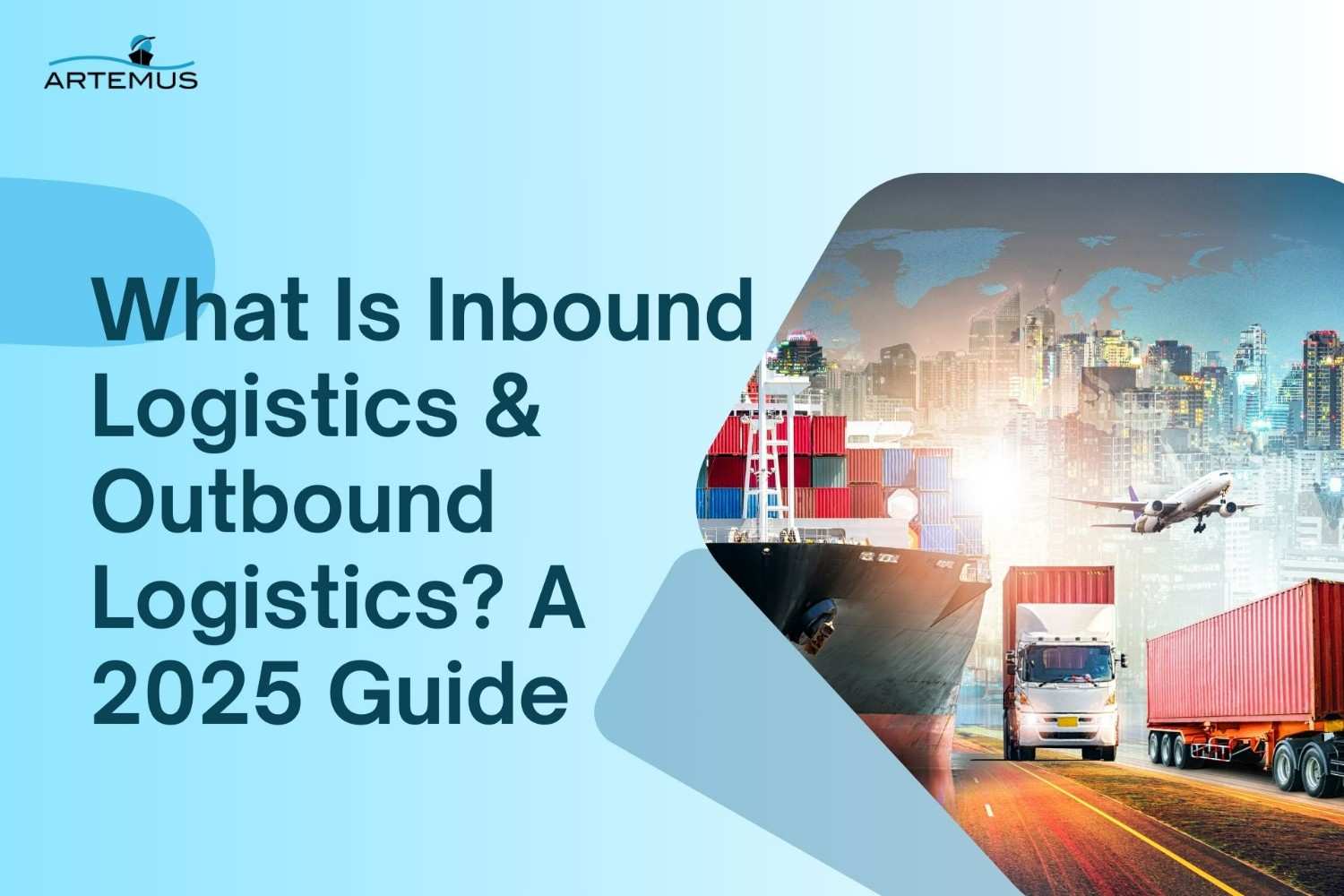
What Is Inbound Logistics & Outbound Logistics? A 2025 Guide
In the dynamic world of supply chain management, understanding the nuances of inbound and outbound logistics is crucial for operational
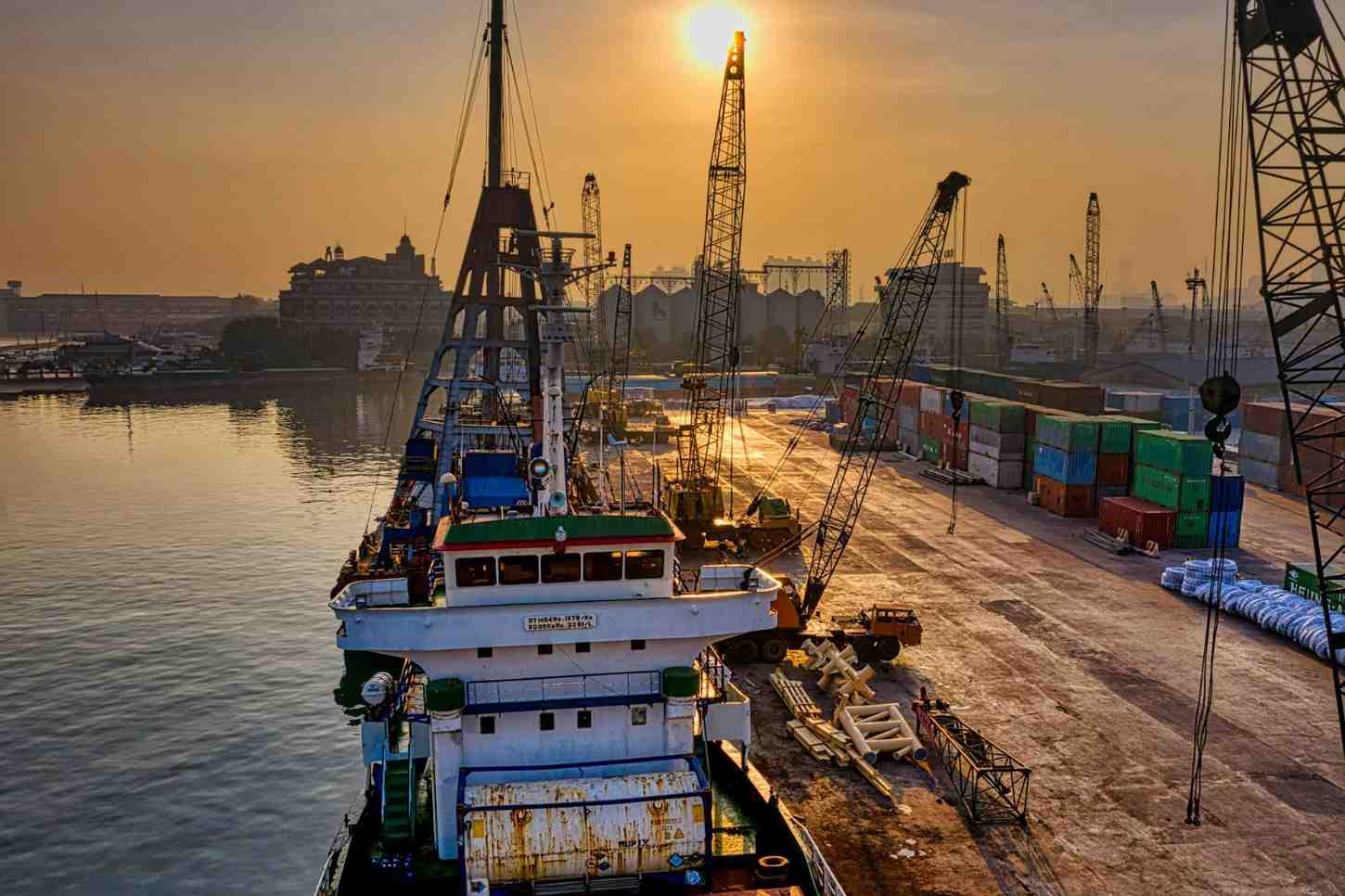
In the intricate web of global trade, the movement of goods across oceans is a vital cog in the wheel of commerce. At the heart of this operation lies the expertise of ocean freight forwarding. But what exactly is ocean freight forwarding, and why is it so crucial? Let’s delve into this fundamental aspect of international logistics.
Ocean freight forwarding is the orchestrated dance of transporting goods via sea vessels from one port to another, spanning vast distances and connecting nations across the globe. It’s the backbone of international trade, facilitating the smooth flow of goods across oceans and enabling businesses to reach distant markets with their products.
Moreover, Artemus Transportation Solutions offers cutting-edge ISF (Importer Security Filing) and AMS (Automated Manifest System) software solutions tailored specifically for freight forwarders. By streamlining and automating the process of filing ISF and AMS data, Artemus empowers freight forwarders to navigate the intricate customs landscape with ease, ensuring compliance and efficiency every step of the way.
Table Of Contents
Ocean freight forwarding is the process of organizing and managing the transportation of goods via ocean vessels from one location to another. It plays a crucial role in international trade, facilitating the movement of cargo between different countries and continents.
Essentially, ocean freight forwarding involves coordinating various aspects of the shipping process, including booking cargo space on vessels, arranging for pickup and delivery of goods, handling documentation, and ensuring compliance with customs regulations.
Ocean freight forwarders act as intermediaries between shippers (exporters or importers) and carriers (shipping lines or liners). These professionals leverage their expertise in logistics and transportation to optimize the shipping process, minimize costs, and ensure the timely delivery of goods. They also provide valuable services such as cargo consolidation, packaging, insurance, and warehousing.
Through collaboration with ocean freight forwarders, enterprises can optimize their supply chain processes and extend their market presence to a global scale. Overall, ocean freight forwarding is a vital component of international commerce, enabling the smooth flow of goods across vast distances and oceans.
Related: How To Choose A Freight Forwarder? 10 Critical Aspects
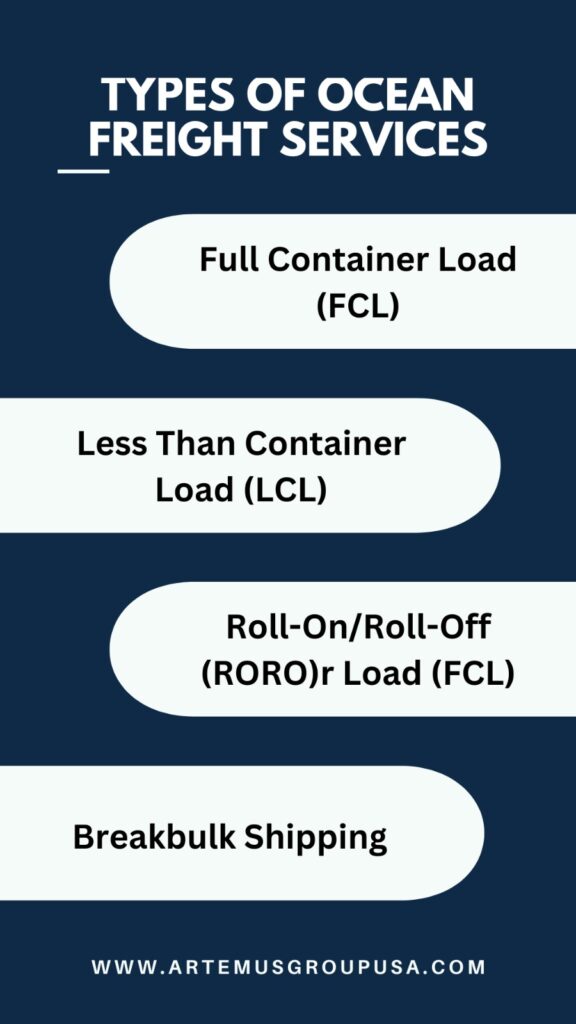
When it comes to shipping goods across oceans, there are several types of ocean freight services available to meet different needs and requirements. These services cater to varying cargo sizes, transit times, and budget constraints. Familiarity with various ocean freight services enables businesses to make well-informed choices when strategizing their shipments.
Full Container Load (FCL) service is suitable for businesses that have enough cargo to fill an entire shipping container. With FCL, the entire container is exclusively dedicated to the shipper’s goods, providing greater control over the loading process and minimizing the risk of damage or loss.
FCL shipments offer flexibility in terms of cargo types, sizes, and packing methods. This service is ideal for high-volume shipments or goods that require maximum protection during transit.
Less Than Container Load (LCL) service is designed for businesses that do not have enough cargo to fill a full container. With LCL, multiple shippers’ goods are consolidated into a single container, allowing them to share the transportation costs. LCL is a cost-effective option for small to medium-sized shipments, as shippers only pay for the space they use within the container.
While LCL shipments may take longer to reach their destination due to consolidation and deconsolidation processes, they offer flexibility and affordability for businesses with lower shipping volumes.
The Roll-On/Roll-Off (RORO) service caters specifically to the transportation of wheeled cargo, including automobiles, trucks, trailers, and heavy machinery. In RORO shipping, vehicles are driven onto the vessel at the port of origin and driven off at the destination port.
This eliminates the need for cranes or lifts to load and unload cargo, making RORO a faster and more efficient shipping option for wheeled vehicles. RORO services are commonly used in the automotive industry and for transporting oversized or heavy equipment.
Breakbulk shipping involves the transportation of non-containerized cargo that cannot fit into standard shipping containers. This includes oversized or irregularly shaped items such as machinery, equipment, and project cargo.
Breakbulk shipments are loaded individually onto vessels and secured using specialized handling equipment and cargo-securing methods. Breakbulk shipping offers flexibility for transporting large or unconventional cargo that cannot be accommodated by standard containerized shipping methods.
Understanding the different types of ocean freight services allows businesses to select the most suitable option based on their cargo requirements, budget constraints, and shipping preferences.
Whether shipping full container loads, consolidating smaller shipments, transporting wheeled vehicles, or handling oversized cargo, there are ocean freight services available to meet diverse shipping needs and ensure the secure and punctual transport of commodities across seas.
Related: How To Become A Freight Forwarder: A Stepwise Guide
The ocean freight forwarding process is a complex yet crucial aspect of international trade, involving various stages and meticulous coordination to ensure the smooth transportation of goods via ocean vessels. Here’s a detailed overview of the ocean freight forwarding process:
The procedure commences as the shipper (exporter) reaches out to a freight forwarder to reserve cargo space aboard an ocean vessel. The freight forwarder then liaises with shipping lines to secure the necessary space and schedules for the shipment. This involves determining the most suitable vessel, route, and departure date based on factors such as cargo volume, destination, and transit time requirements.
Once the booking is confirmed, the freight forwarder assists the shipper in preparing the required documentation for the shipment. This typically includes a bill of lading, commercial invoice, packing list, and any other relevant export documents. The freight forwarder also ensures compliance with customs regulations and assists with customs clearance processes at both the origin and destination ports.
Prior to shipment, the freight forwarder oversees the packing, labeling, and marking of the cargo to ensure it is properly prepared for transportation. For Less Than Container Load (LCL) shipments, the freight forwarder consolidates multiple shippers’ goods into a single container to optimize space and minimize costs. For Full Container Load (FCL) shipments, the freight forwarder arranges for the container to be delivered to the shipper’s premises for loading.
The freight forwarder selects the most appropriate ocean carrier based on factors such as shipping routes, transit times, reliability, and cost. They negotiate freight rates and terms with the chosen carrier to secure the best possible deal for the shipper. The freight forwarder also arranges for the transportation of the cargo to the port of origin and coordinates with trucking companies or rail operators for inland transportation.
Throughout the shipping process, the freight forwarder provides tracking and monitoring services to keep the shipper informed of the status and location of their cargo. They utilize advanced tracking technologies and communication systems to provide real-time updates on the progress of the shipment. This transparency and visibility allow the shipper to plan and manage their supply chain more effectively.
Upon arrival at the destination port, the freight forwarder arranges for the customs clearance and release of the cargo. They coordinate the transportation of the cargo from the port to its final destination, whether by truck, rail, or other modes of transport. The freight forwarder ensures timely delivery of the cargo to the consignee (importer) and provides any necessary support or assistance throughout the delivery process.
In summary, the ocean freight forwarding process involves a series of interconnected steps, from booking and documentation to cargo handling, carrier selection, tracking, and delivery. By partnering with a reputable freight forwarder, businesses can streamline their international shipping operations and ensure the efficient and reliable transportation of their goods across oceans.
Related: What Does A Freight Forwarder Do? Functions & Future Trends
Ocean freight, as a mode of transportation, offers numerous advantages that make it a popular choice for businesses engaged in international trade. Here are some of the key advantages of ocean freight:
1. Cost-Effectiveness: One of the primary advantages of ocean freight is its cost-effectiveness, especially for large and heavy shipments. Compared to air freight, ocean freight typically offers lower transportation costs per unit of goods. This makes it an attractive option for businesses looking to minimize their shipping expenses, particularly for bulky or non-perishable goods with longer lead times.
2. Large Capacity: Ocean vessels have significant cargo capacity, capable of transporting large volumes of goods in a single shipment. This makes ocean freight an ideal choice for businesses with high-volume shipping needs or those dealing with oversized or irregularly shaped cargo that may not fit into standard shipping containers. The ability to consolidate multiple shipments into a single container further maximizes efficiency and reduces costs.
3. Global Reach & Connectivity: Ocean freight provides access to an extensive network of shipping routes and ports, enabling businesses to reach markets around the world. With regular sailings to major ports and destinations across continents, ocean freight offers reliable connectivity to diverse regions, facilitating international trade and market expansion. This global reach allows businesses to tap into new markets and diversify their customer base.
4. Environmentally Friendly: Compared to other modes of transportation, such as air freight or road transport, ocean freight is generally considered more environmentally friendly. Ocean vessels emit lower levels of greenhouse gases per unit of cargo transported, making them a greener option for long-distance shipping. Additionally, advancements in vessel technology and fuel efficiency continue to improve the environmental performance of ocean freight, aligning with sustainability goals and environmental regulations.
5. Flexibility In Cargo Types: Shipping by sea accommodates a diverse array of cargo, encompassing both containerized and non-containerized items. Whether shipping raw materials, finished products, machinery, vehicles, or perishable items, ocean freight offers flexibility to accommodate diverse cargo requirements. This versatility allows businesses to transport various types of goods efficiently and cost-effectively, catering to different industries and supply chain needs.
6. Reliability & Security: Ocean freight is known for its reliability and security, with established shipping schedules and robust safety measures in place. Shipping lines adhere to strict international regulations and industry standards to ensure the safe and secure transportation of cargo. Additionally, advanced tracking and monitoring technologies provide visibility into the status and location of shipments, enhancing security and reducing the risk of loss or damage.
Related: NVOCC VS Freight Forwarder: Differences & Who To Choose?
While ocean freight forwarding offers numerous advantages, it also presents various challenges that freight forwarders and businesses must navigate to ensure successful and efficient shipping operations. Here are some of the key challenges in ocean freight forwarding:
1. Regulatory Compliance: Navigating the complex landscape of international trade regulations and customs requirements is a significant challenge in ocean freight forwarding. Freight forwarders must stay abreast of ever-changing import and export regulations, tariffs, sanctions, and trade agreements imposed by different countries and regions. Failure to comply with these regulations can result in delays, fines, or even the seizure of cargo, posing a risk to the supply chain and business relationships.
2. Environmental Concerns: The maritime shipping industry is under increasing pressure to address environmental issues such as air and water pollution, greenhouse gas emissions, and marine biodiversity loss. While ocean freight is generally considered a more environmentally friendly mode of transportation compared to air freight or road transport, vessels still contribute to carbon emissions and environmental degradation. Implementing sustainable practices and reducing the environmental footprint of ocean freight operations present ongoing challenges for the industry.
3. Supply Chain Disruptions: Ocean freight forwarding is susceptible to various supply chain disruptions, including natural disasters, geopolitical tensions, labor strikes, port congestion, and equipment shortages. These disruptions can lead to delays, rerouted shipments, increased costs, and operational inefficiencies. Managing and mitigating supply chain risks requires proactive planning, contingency measures, and effective communication between stakeholders to minimize the impact on cargo flow and delivery schedules.
4. Capacity Constraints: Fluctuations in global demand, seasonal peaks, and imbalances in trade lanes can create capacity constraints in ocean freight transportation. During peak seasons or periods of high demand, shipping lines may struggle to accommodate all cargo bookings, leading to limited space availability, higher freight rates, and potential delays. Businesses must anticipate capacity constraints and work closely with freight forwarders to secure space on vessels and optimize shipping schedules to meet their supply chain needs.
5. Cybersecurity Threats: As the maritime industry becomes increasingly digitized and reliant on technology, cybersecurity threats pose a growing risk to ocean freight forwarding operations. Cyberattacks targeting shipping companies, ports, and supply chain systems can disrupt communication networks, compromise sensitive data, and jeopardize cargo security. Implementing robust cybersecurity measures, training employees on cyber hygiene practices, and investing in secure IT infrastructure is essential to safeguarding against cyber threats and maintaining the integrity of ocean freight operations.
Related: Customs Broker VS Freight Forwarder: 5 Key Differences
Ocean freight rates, crucial in international shipping logistics, are determined by a combination of factors that reflect the intricate workings of the global maritime industry. Typically, these rates are calculated based on various charges, including the weight of goods and the space they occupy.
For instance, the cost per kilogram of cargo and container space is a primary component of ocean freight rates. However, these charges are not static; they can vary based on several additional factors and surcharges. These may encompass insurance costs, customs security surcharges, container freight station charges (applicable to Less Than Container Load or LCL consolidation), pickup and delivery fees, routing charges, customs brokerage, and fuel surcharges.
It’s crucial for businesses aiming to enhance their shipping strategies to comprehend and assess the factors impacting ocean freight rates. Moreover, ocean freight charges are subject to fluctuation due to several dynamic elements. Fuel costs play a significant role; any fluctuations in fuel prices directly impact freight rates. Exchange rates also influence costs, as slight fluctuations can lead to significant losses for shipping lines.
Additionally, supply and demand dynamics in the shipping industry contribute to rate fluctuations, with seasonal spikes in demand, such as before festive holidays like Chinese New Year, driving rates upward. Furthermore, the size and type of shipment also impact costs, with larger-sized shipments requiring more resources and specialized vessels potentially incurring higher expenses.
Ultimately, a comprehensive understanding of these factors allows businesses to navigate the complexities of ocean freight rates effectively and make informed decisions regarding their shipping strategies.
Related: OTI License Requirements, Costs, Renewal, & Regulations
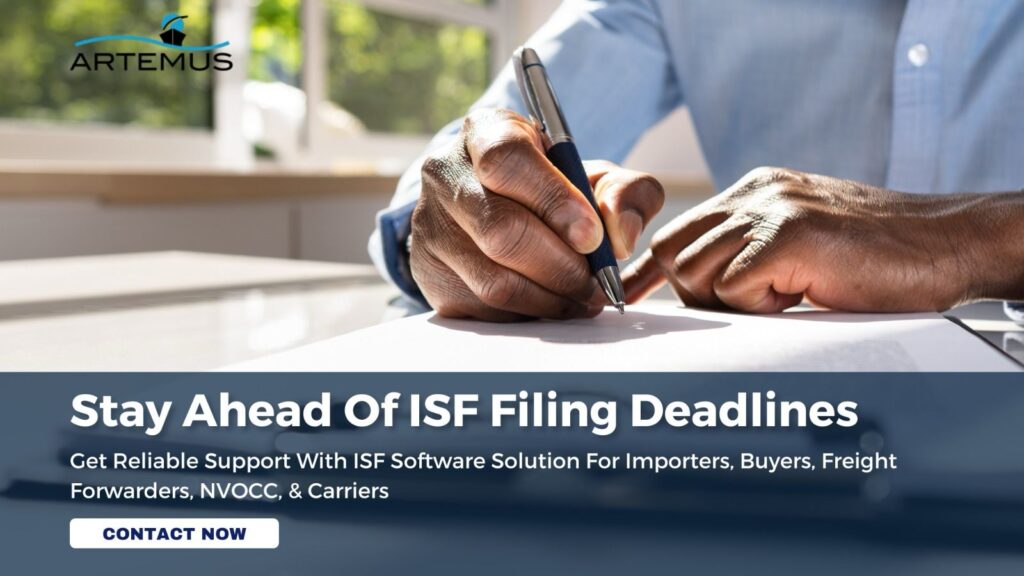
Artemus Transportation Solutions specializes in providing comprehensive ISF (Importer Security Filing) and AMS (Automated Manifest System) software solutions tailored for freight forwarders. The innovative software streamlines and automates the process of filing ISF and AMS data, ensuring compliance with U.S. Customs and Border Protection regulations.
By offering a user-friendly and efficient software solution, Artemus empowers freight forwarders to accurately and timely submit required information, thereby minimizing the risk of penalties and delays in customs clearance. With Artemus’s ISF and AMS software, freight forwarders can enhance their operational efficiency, reduce administrative burdens, and optimize their compliance efforts, ultimately improving the overall effectiveness of their shipping operations.
Related: What Is Global Trade Compliance & Its Key Components
An ocean freight forwarder is a logistics company that specializes in arranging and managing the transportation of goods via ocean vessels from one location to another, handling tasks such as booking cargo space, documentation, customs clearance, and coordinating with shipping carriers.
Ocean freight refers to the transportation of goods via ships across oceans or seas, typically involving the movement of cargo in containers or as bulk cargo.
Freight forwarding is the process of organizing and managing the shipment of goods from one place to another on behalf of a shipper, handling tasks such as booking transportation, documentation, and customs clearance.
The ocean freight forwarding industry involves the coordination and management of the shipment of goods by sea. Freight forwarders arrange the transportation, documentation, and customs clearance for international cargo shipments, ensuring smooth and efficient movement across global waters.
As of recent rankings, DHL Global Forwarding is considered the largest ocean freight forwarder, offering extensive services for global shipping and supply chain management, handling millions of containers each year.
An ocean carrier is a shipping company that owns and operates vessels to transport goods across the ocean, while a freight forwarder is a third-party intermediary that arranges the transportation of goods for clients, coordinating shipments across various carriers and logistics services.
Ocean freight rates per kilogram vary depending on factors such as shipment volume, destination, and cargo type. Generally, rates range from $1 to $5 per kg, but it’s best to get a quote from a freight forwarder for more accurate pricing.
The stages of freight forwarding include booking cargo, preparing export documentation, arranging transportation, customs clearance, loading onto the vessel, delivery to the destination port, and final delivery to the recipient.
Ocean freight forwarding is the process of coordinating the shipment of goods by sea, involving booking cargo space, arranging transport, handling documentation, and ensuring compliance with customs regulations for international shipments.
The seven stages of shipment are 1) Order placement, 2) Cargo collection, 3) Customs documentation, 4) Ocean freight transport, 5) Arrival at destination port, 6) Customs clearance, and 7) Final delivery to consignee.
The procedure for freight forwarding typically includes receiving the shipment request, arranging transportation, handling documentation and customs clearance, organizing insurance, and coordinating the final delivery of goods to the destination.

Ocean freight forwarding stands as a cornerstone of global commerce, facilitating the movement of goods across vast oceans and connecting economies worldwide. From managing complex logistics to navigating regulatory hurdles, ocean freight forwarders play a pivotal role in ensuring the smooth and efficient transportation of goods.
As businesses continue to expand their reach into new markets and navigate the complexities of international trade, the expertise of ocean freight forwarding remains indispensable.
Related: Shipment Has Been Given A Release Status By Customs

In the dynamic world of supply chain management, understanding the nuances of inbound and outbound logistics is crucial for operational

In today’s interconnected world, businesses rely heavily on global trade to expand their markets, access new resources, and drive growth.
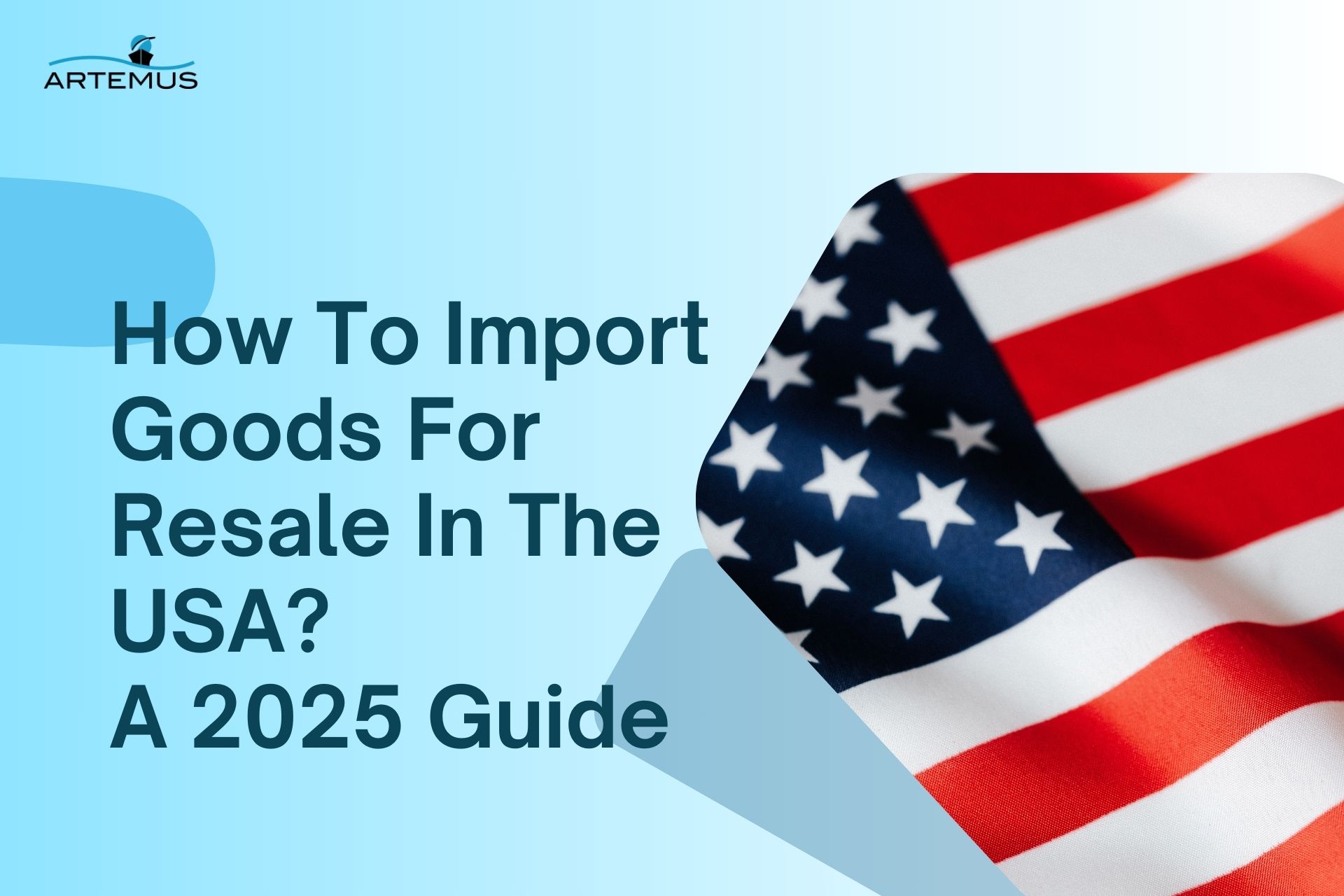
Importing goods for resale in the USA presents a lucrative business opportunity, but navigating the complexities of U.S. customs regulations,
Get In Touch
Artemus’ Software Solutions for ISF, AMS, Japan AFR, eManifest Canada, & Panama B2B filings.